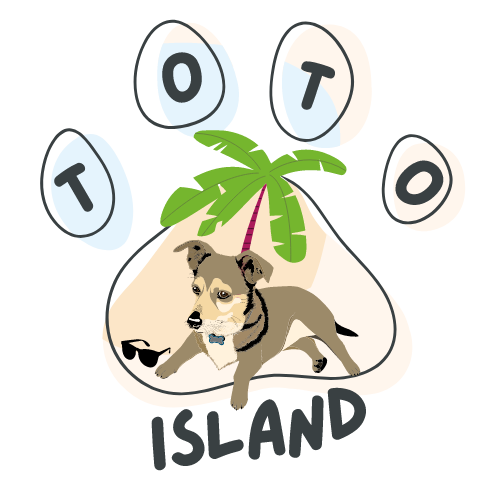Dog massage for anxiety is a therapeutic technique used to alleviate stress and anxiety in dogs through manual manipulation of their muscles and tissues. This practice has gained popularity due to its natural and non-invasive approach to improving canine well-being.
Why choose dog massage to treat anxiety?
Swedish dog massage offers numerous benefits, including reducing anxiety, improving circulation, enhancing immune function, and strengthening the bond between the dog and owner. As pet owners seek holistic and complementary treatments for their pets, dog massage stands out as an effective and gentle option.
Types of canine anxiety
Separation anxiety: Separation anxiety occurs when a dog experiences extreme distress when separated from its owner. This can manifest in destructive behaviors, excessive barking, and other signs of distress.
Generalized anxiety: Generalized anxiety is characterized by a persistent state of worry or fear that is not linked to any specific event or situation. Dogs with this condition may exhibit nervous behaviors in various contexts.
Noise anxiety: Noise anxiety is triggered by loud or sudden noises such as fireworks, thunderstorms, or construction sounds. Dogs with noise anxiety may show signs of panic, such as trembling, hiding, or attempting to escape.
Symptoms and signs of anxiety in dogs
Behavioral symptoms
- Excessive barking or whining
- Destructive behaviors: chewing, digging
- Aggression or irritability
Physical Symptoms
- Trembling or shaking
- Panting or drooling
- Pacing or restlessness
Dog anexity causes and risk factors
Biological factors: Genetics and breed predisposition can play a role in a dog’s likelihood of developing anxiety. Some breeds are more prone to anxiety disorders due to their temperament and sensitivity.
Environmental factors: Changes in environment, lack of socialization, or traumatic experiences can contribute to anxiety in dogs. Moving to a new home, the arrival of a new pet, or changes in routine can be significant stressors.
Lifestyle factors: Lack of exercise, inadequate mental stimulation, and poor diet can exacerbate anxiety symptoms in dogs. Ensuring a balanced lifestyle can help mitigate these issues. Dog fitness treatments can also improve this kind of anxiety.
Diagnosis and tests
Veterinary assessment: A thorough veterinary assessment is crucial to diagnose anxiety in dogs accurately. This includes a detailed history, physical examination, and discussion of behavioral symptoms.
Behavioral consultations: Behavioral consultations with a certified animal behaviorist can provide insights into the specific triggers and patterns of anxiety, helping to tailor an effective treatment plan.
Dog anexity treatment options
Medical treatments: Veterinarians may prescribe medications such as anxiolytics or antidepressants to help manage severe anxiety in dogs. These medications can be used in conjunction with behavioral therapies.
Behavioral therapy: Behavioral therapy, including desensitization and counter-conditioning techniques, can help dogs learn to cope with anxiety-inducing situations in a controlled and positive manner.
Complementary therapies for anxiety in dogs
Dog massage is an effective adjunctive therapy that can help reduce anxiety by promoting relaxation and releasing muscle tension. Before signing up for a dog massage with your pet, let the dog massage therapist know that a relaxing massage is needed and also what symptoms you experienced in your dog that indicated anxiety.
Dog massage techniques for anxiety
Basic principles of dog massage: Dog massage involves gentle, rhythmic strokes that mimic natural comforting behaviors. The goal is to create a calming and soothing effect, reducing stress and anxiety.
Effleurage: Effleurage involves long, sweeping strokes that warm up the muscles and increase circulation. This technique is ideal for relaxing tense muscles and calming anxious dogs.
Petrissage: Petrissage consists of kneading and squeezing the muscles to release tension and promote relaxation. It helps to alleviate muscle knots and improve overall muscle health.
Friction: Friction involves applying deeper pressure to specific areas to break down adhesions and improve flexibility. This technique should be used with caution and under guidance from a professional.
Aromatherapy
Using essential oils like lavender and chamomile can have a calming effect on anxious dogs. It’s important to consult a veterinarian before using any aromatherapy products.
Personal stories of relieving anxiety in dogs
Bella’s transformation
Bella, a 4-year-old Labrador, suffered from severe separation anxiety. Through a combination of behavioral therapy, regular massage sessions, and environmental enrichment, Bella’s anxiety levels significantly decreased, and her overall quality of life improved.

Solving the anxiety of Bella the labrador dog
Max’s journey
Max, a rescued terrier mix, exhibited signs of generalized anxiety. His owner implemented a holistic approach, including diet changes, massage therapy, and aromatherapy, leading to a calmer and happier dog.

Solving the anxiety of Max the terrier mix dog
Dog massage for anxiety is a valuable tool in managing canine stress. It offers a natural, non-invasive way to promote relaxation, improve circulation, and enhance the bond between dog and owner. Understanding the causes, symptoms, and treatment options for canine anxiety is essential for providing the best care for your furry friend.
If your dog shows signs of anxiety, consider incorporating dog massage into your routine. Consult with a veterinarian or a certified canine massage therapist to ensure you are using the correct techniques and approaches.
For dog massage treatments, feel free to contact me in the Saint Augustine area! Give me a call, and let’s schedule the first appointment! (904) 377 6291

